
This page last revised 01 November 2006 -- S.M.Gon III
Introduction
Ecoregion
Conservation Targets
Viability
Goals
Portfolio
TNC Action Sites
Threats
Strategies
Acknowledgements
▫
Tables
Maps & Figures
CPT Database
Appendices
Glossary
Sources
.
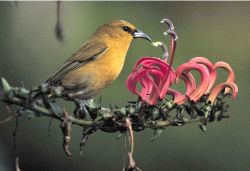
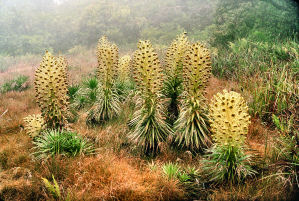
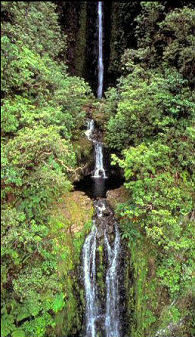
Hawaiian Continuous Perennial Streams
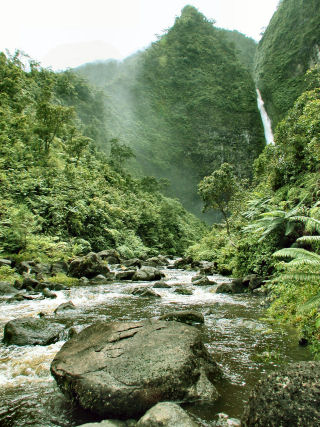
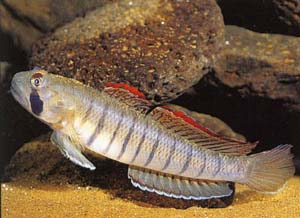
ʻOʻopu naniha, like other native Hawaiian gobies, requires intact
stream habitat from headwaters to sea. Learn more.
The native biotic componentof Hawaiian streams varies by location, size of stream and extent ofdisturbance. Native stream animals typically include gobiid fish, snails,crustaceans and insects. The five gobiid fish species of Hawaiian continuousperennial streams include 4 endemic species, ‘o‘opu nākea(Awaous stamineus), ‘o‘opu nopili (Sicyopterisstimpsoni), ‘o‘opu alamo‘oor ‘o‘opuhi‘ukole(Lentipes concolor) and ‘o‘opu okuhe or akupa(Eleotris sandwicensis), and one indigenous species, ‘o‘opunaniha (Stenogobius genivitatus), known also from Samoa. Other nativefish found in Hawaiian streams include aholehole (Kuhlia sandvicensis)and mullet (Mugil cephalus).
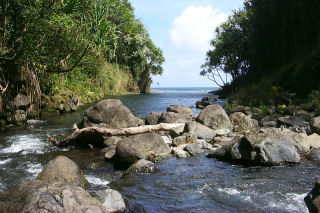
Hawaiian Continuous Perennial Stream, Hanawī, East Maui
Learn more at the State of Hawai'i Aquatic Resources page.
Threats
Threats toHawaiiancontinuous perennial streams include modifications of channel, changesinstream flow by diversion of water, siltation via erosion of disturbedwatersheds, direct or indirect pollution of surface or groundwater, andintroduction of alien stream animals that either feed on or competewith nativespecies. Because of the diadromous life cycles of most nativestream macrofauna, intact headwaters and upper stream courses withhighly modified lower courses and mouths limit all but the most hardynative species.
Even the most remote and unaltered streams may be invaded by alienspecies, if those species have oceanic larvae that can disperse between streamsor between islands. Alien prawns, such as the Tahitian prawn (Macrobrachiumlar) and Malaysian prawn (M. rosenbergii) are predatory on almostall native stream elements, have an oceanic dispersal phase, and are aparticularly difficult problem to address. Other significant alien streamanimals include fishes such as cichlids (Cichlasoma spp.), catfish (Clariasfuscus), bass (Micropterus spp.), tilapia (Tilapia spp.),live-bearers, such as mosquitofish (Gambusia affinis), guppies (Poeciliaspp.), and swordtails (Xiphophorus, spp.) and the freshwater clam (Corbiculeafluminea)
Protected examples ofHawaiian continuous streams may be found in the Waimanu Estuarine Sanctuary, PelekunuPreserve of The Nature Conservancy of Hawai‘i, KīpahuluValley in the Haleakalā National Park and WaiahuakuaValley in the Hono O Nā Pali Natural Area Reserve.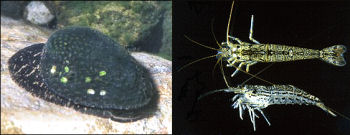

| KAUA‘I Hanakāpī‘ai Limahuli Lumaha‘i Waimea O‘AHU Anahulu Punalu‘u Kaluanui Kahana MOLOKA‘I Waikolu Pelekunu Wailau Hālawa | MAUI Honokōhau Kahakuloa Hanawī ‘Ohe‘o HAWAI‘I Waipi‘o Honokānenui Honoli‘i Hanawī |
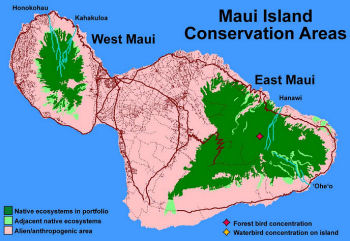
Selected portfoliostreams for Maui Island occur in two conservation areas: West Maui(Honokōhau & Kahakuloa Streams), and East Maui (Hanawī and 'Ohe'o Streams)
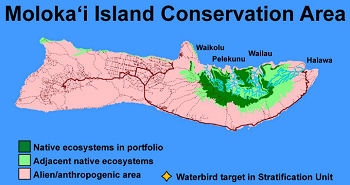
Selectedportfoliostreams for Moloka'i Island are Waikolu, Wailau, Pelekunu, andHālawa. Wailau and Pelekunu are considered among the highestquality streams inthe ecoregion.
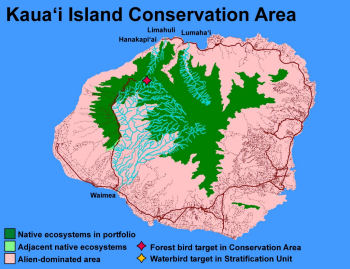
Selectedportfoliostreams for Kaua'i Island are Hanakāpī'ai, Limahuli, Lumaha'i, andWaimea. The Waimea drainage in particular is one of the most complex inthe ecoregion.
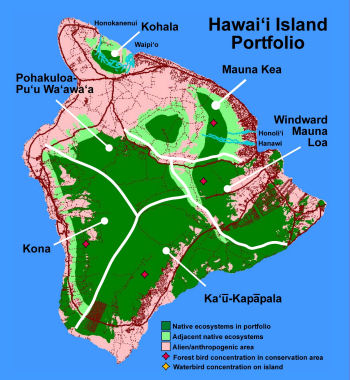
Selectedportfolio streams for Hawai‘i Island occur in twoconservation areas: Kohala (Waipi‘o & Honokanenui Streams),and Mauna Kea (Honoli‘i & Hanawī Streams)
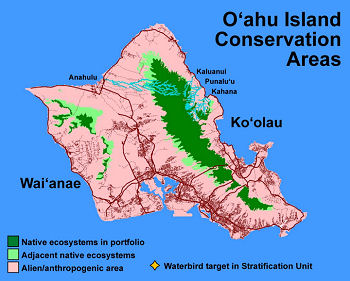
Selected portfoliostreams for O'ahu Island are Kaluanui, Punalu'u, Kahana, and Anahulu. All four drain from the wet Ko'olau conservation area.